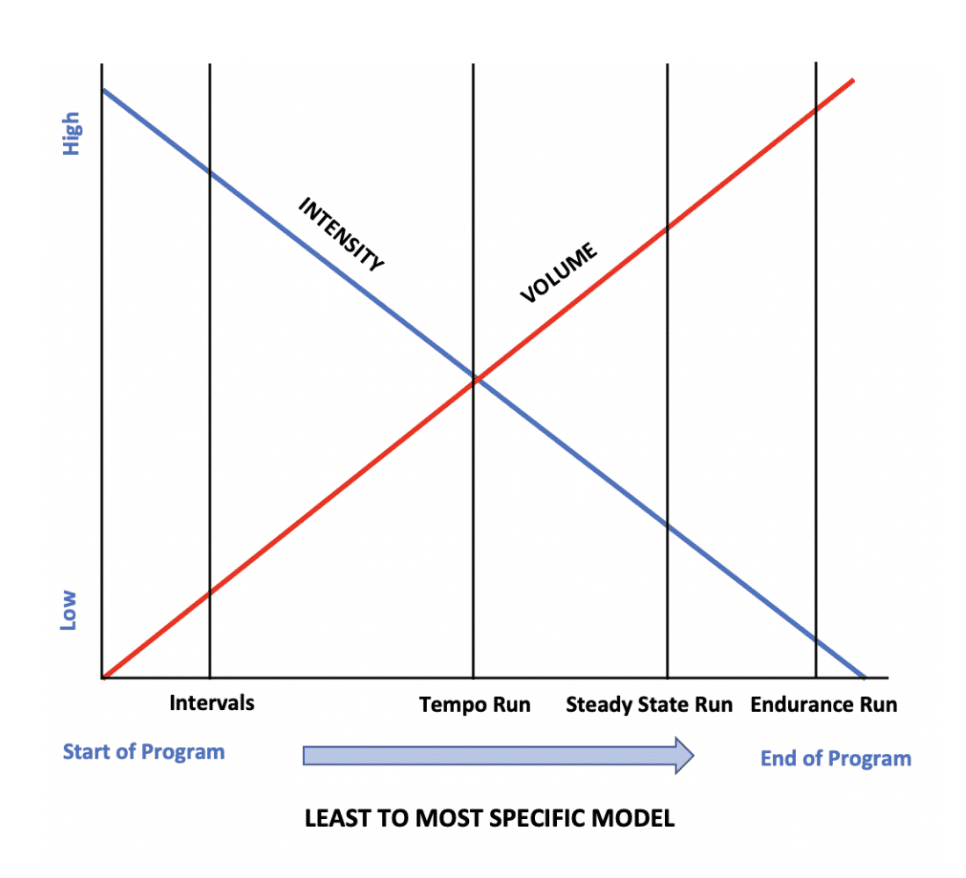‘Base Training’ is a commonly used term but do you really understand what it means? We provide an overview here so you can easily apply it to training and periodization.

What is Base Training? Among endurance athletes, base training is synonymous with early-season training at a low intensity that increases in volume with the purpose of building one’s aerobic fitness. While this is often the correct programming strategy, in many cases, it may not be the right strategy. But why?
What’s In The Name?
As noted above, base training is most associated with easy intensity and increasing volume to build fitness. To illustrate this, this training concept is often described as the foundation of a house. In other words, without a solid foundation (i.e., solid aerobic fitness level), you have nothing to build on. While this is largely true, the definition of ‘Base Training’ is where athletes and coaches often run into problems. Instead of inferring base training to a particular type of training intensity/volume, it should be viewed more from the point in the training process it occurs and more importantly, in the context of the event being trained for.
Pyramid Shape?

The conventional training model often resembles a pyramid, with the base phase being the largest and at the bottom of the pyramid. As an athlete progresses in the training pyramid, they move up the pyramid and the training becomes more intense and for shorter durations of time.
As alluded to throughout this post, this is not always the case. For example, if an athlete stays in great condition all winter long, they might not need a long (or any) low-intensity phase of training (conventional base training phase). Moreover, if they are targeting a long event, as noted below, their ‘base’ phase should be something that is high-intensity, not low intensity and as such, the phase would not last for very long.
As you can see, the standard pyramid-shaped training model may or may not be the right program for an athlete… but regardless, it should not be automatically implemented without consideration of the athlete’s fitness level and the event being trained for.
Least to Most Specific
This is the genesis of why base training is often performed incorrectly. One of the most important aspects of creating a training program is to focus on the least specific things furthest away from the event and the most specific things closest to the event. As you can see, what is focused on at the beginning and end of a program is entirely based on the event. For example, if a runner is targeting a fast 5K, the training program would first focus on easy and increasing volume and would conversely focus on low volume and high intensity toward the end of the program. However, if an athlete is targeting a 100-mile ultramarathon, the areas of focus would be flipped in relation to the 5K. Therefore, when you think of ‘base training,’ think of what is least specific to the event being trained for.
Below is a chart that illustrates the areas of focus for an ultramarathon.

Athlete Dependent
For a lot of endurance athletes, they stay in pretty good shape all year around. This greatly minimizes the need for a ‘traditional’ base period that focuses on gaining aerobic fitness. As such, these athletes can typically jump back into fairly high-intensity or volume training without much issue. However, for those new to exercising/endurance sports, or athletes that are coming off the transition season without doing much training, these individuals will likely need some form of low intensity training to build their aerobic fitness level. However, for these individuals, this phase of training would be more accurately described as ‘Build Fitness’ or something to that effect rather than ‘Base Training.’
Strengths and Weaknesses
Another way to build a program is to identify your strengths and weaknesses and put an emphasis on training your weaknesses at the beginning of the program and your strengths closest to the event being trained for. This may or may not correlate with the ‘Least to Most Specific’ guideline discussed above.
Summary
The main takeaway from this post is that you should look to redefine what ‘Base Training’ means with respect to how it is typically defined. Moreover, if you are following a ‘Least to Most Specific’ model, you must focus on what aspects of the race being trained for that are least and most important to success on race day, and let that be your guide in regard to what elements should be included in the base phase of training.








